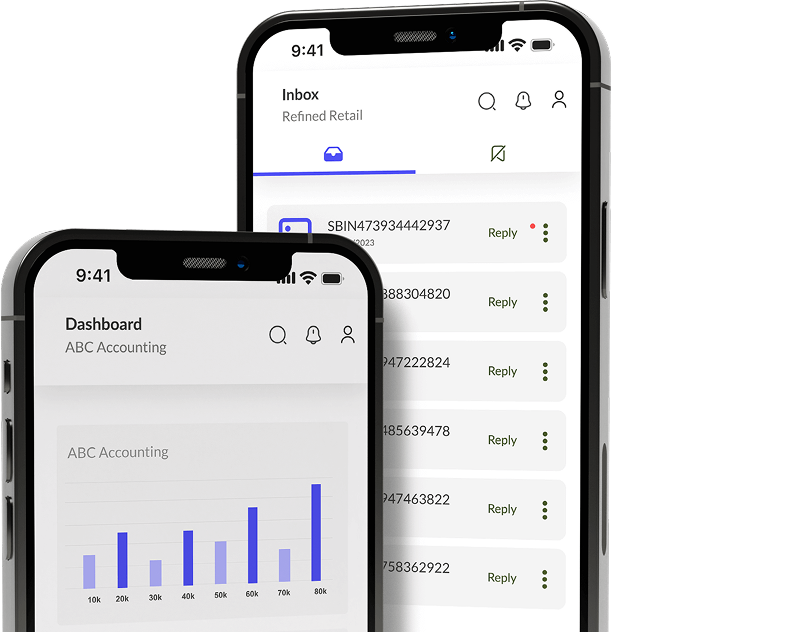Most small business founders have the same ritual. They register the company, open a bank account, and then that’s it. But that’s not all. There should be more. Much more.
Think of your financial system like building a house. A plot of land isn’t enough, is it? You’d need foundations, walls, plumbing, electricity, windows, and whatnot. Only then does it become a space you can actually live and grow in.
The same stands true for your business. A bank account is just the land. However, the real stability comes from a well-designed financial stack. If you are an MSME, SME or a tech-startup founder, here’s an easy structure that you can consider implementing or modifying in your business.
Layer 1: Bank Account - Your Foundation
This is where it all starts. The actual root and foundation of it all. Your bank account is the ground your business stands on. It’s where payments come in, salaries go out, taxes get deducted, and vendors get paid. Without it, nothing else works. But on its own, it’s not enough, unless you can live on just a foundation slab.
Layer 2: Accounting Tool - The Frame of the House
The second layer is your accounting tool. Be it Tally, Zoho Books, QuickBooks, Vyapar, whatever fits your size and comfort. This is like the frame and walls of your financial house. It gives structure to your numbers: sales, expenses, payroll, GST filings, and compliance. Many small businesses may skip this or treat it as an afterthought, relying only on their CA once a year. But without proper books, you’re essentially living in a house with no walls where you’re exposed to all kinds of dangers and calamities like risk, chaos, and compliance headaches.
Layer 3: Payment Gateway - The Front Door
Some businesses need a sturdy front door, a way for customers to walk in and pay easily.
Some businesses need a sturdy front door. While some need a sturdier one. Because, of course, that’s a way for customers to walk in AND pay easily. That’s where payment gateways like Razorpay, Stripe, or PayU come in. Look, they’re not always necessary. If you’re a B2B trading firm, you may not care. But if you’re an ed-tech startup or an online store, this definitely matters. This benefits you and stops you from chasing NEFT screenshots. Customers can pay through cards, wallets and the all-easy UPI.
Layer 4: Automation Layer - The Plumbing and Wiring
This is the invisible magic of a modern house. You don’t see the pipes and wires (unless you have X-ray vision), but without them, daily life becomes a nightmare. In financial terms, this is automation. Instead of manually entering invoices, matching payments, and managing bank statements, you let technology do the heavy lifting.
Tools like Accomation.io are built for exactly this. They pull data from invoices, PDFs, or bank feeds, process and clean it, and then push it into your accounting system. The result is fewer errors, faster closing, and a lot less time wasted on repetitive bookkeeping.
If you’re a founder, you know this means more time spent on growth and less time on chasing receipts. How big of a sigh of relief that would be, no?
Layer 5: Dashboard / Analytics - The Windows and Balcony View
Finally, a house isn’t just walls and plumbing. You need windows and balconies to actually see where you are and where you’re going. That’s what a dashboard or analytics layer provides. Instead of waiting for your accountant to prepare last quarter’s report, you get a live view of:
Cash flow vs profit
Pending receivables and payables
Sales trends by month
Expense breakdowns
Whether you use Zoho Analytics, Power BI, or the built-in reporting layer of your automation tool, this visibility changes the game. And once that analytics is in place, that’s when you actually start making decisions that are data-driven, not emotion-driven.
In a nutshell…
When your house is well-built and well-thought-out, you don’t worry about having cracks and leaks when the monsoon arrives. In the same way, a well-built financial stack keeps your business steady no matter how rough the market or the business gets.
That’s the stack we’ve seen work for MSMEs, SMEs, and startups alike. It doesn’t have to be expensive, complicated, or enterprise-level. The point is to set up a system that’s simple enough to run today, but strong enough to scale tomorrow.
What financial stack does your business use? Tell us in the comments below. Let’s talk.




